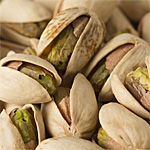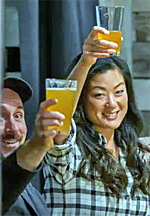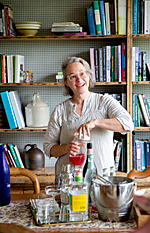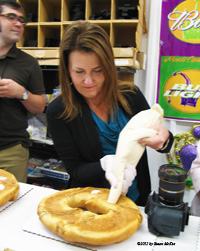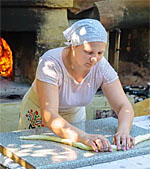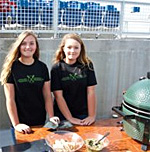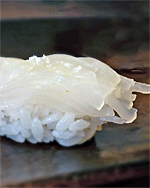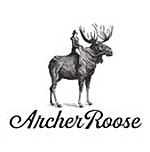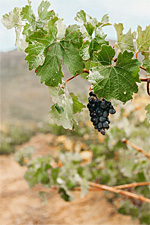The Saxons and their Coffee
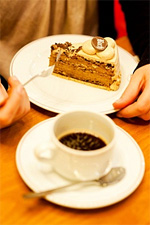 Special to Road Trips for Foodies
Special to Road Trips for Foodies
By Leipzig Tourism and Marketing
The first exhibition of coffee beans at the Leipzig Trade Fair took place in 1670.
“Lehmann: Chocolatier to the Royal Polish and Saxon Courts” opened the first coffee stall in the marketplace in 1694. In 1719 coffee-lovers were flocking to a café in the Kleine Fleischergasse, the “Coffe Baum”, which had been made famous around the world by Robert Schumann.
Now everyone knows about our “Bliemch’ngaffee” and “Muggefukk”, although at this point a quick lesson in the Saxon dialect may be needed to help understand these strange terms.
Bliemch’ngaffee is the dialect form of “Blümchenkaffee”, or “flower coffee” – so-called because it has so much water in it that when the coffee was poured into a traditional Meissen porcelain cup, it was still possible to see the typical floral design on the bottom. You could say it’s a coffee that’s easy on the heart.
Muggefukk – “Moka faut” was the call of the French soldiers, as Napoleon’s troops entered Leipzig. This was a coffee with malt or large amounts of chicory mixed into it. The phrase “moka faut” was mangled by the Saxons into “Muggefukk”.
The fact that the people of Leipzig are affectionately known as the “Kaffeesachsen” (Coffee-drinkers of Saxony) tells us all we need to know about their fondness for the Arabian brew. It is also no surprise that as far back as 1695 there were already coffee shops here in this city of trade fairs, and they were popular meeting places. Today, the tradition is preserved in a number of historical cafés in the city centre and has been further revived by the establishment of new coffee houses. The most famous names include the “Zum Arabischen Coffe Baum” and Kaffeehaus Riquet, Café Corso and Café Kandler.
Zum Arabischen Coffe Baum
The “Coffe Baum” is one of the oldest coffee shops in Europe to survive in its original form. In 1717, Johann Lehmann purchased premises in the Fleischergasse, which he converted into a coffee house. One year after his death in1720 it was opened by his widow as “Zum Arabischen Coffe Baum”.
The third floor now houses a coffee museum with one of the most important collections in the world. There are 15 rooms with over 500 specially selected exhibits dating from Saxony’s 300-year history of coffee and culture.
The artefacts include table-top roasters and coffee mills from various eras and a very modern sample roaster.
The sandstone sculptural design above the doorway is a famous feature of the building. It depicts an Ottoman Turk with a large pot of coffee passing a cup to Eros, and symbolises the meeting of the Christian West and the Muslim East.
Kaffeehaus Riquet
When these business premises were commissioned by Riquet & Co in 1908/09 the result was one of the most modern and original-looking new buildings in Leipzig at the time.
Riquet had a history of trade with Eastern Asia and the Far East going all the way back to the year 1745, and the architect, Paul Lange, very cleverly incorporated this into the design of the café.
He built curved two-storey towers on the roof in classical Chinese style. The balustrades, pillars, main cornices and curved gables are all decorated with beautifully coloured Art Nouveau mosaics. The café entrance is flanked by two elephant heads wrought in copper, representing the Riquet trade mark.
The listed interior of the corner shop has been fully restored to its former glory. Once Leipzig boasted over thirty coffee shops: none of the originals remain today, but since 1996 the Riquet coffee shop has been doing its best to revive the Leipzig coffee house tradition.
Café Kandler
Since 1989 Café Kandler has been offering discerning guests a unique blend of tradition, style and Leipzig’s very own coffee house charm. The Kandler cafés are a favourite meeting place for lovers of exquisite cakes, tortes, and ices from the patissier and speciality coffees and teas.
Café Kandler’s products include premium quality baumkuchen, tortes, fine biscuits, Leipziger Lerchen cakes, Bachtaler chocolates and delicate pralines, available in the prettiest locations in Leipzig: at its traditional coffee houses by the churches of St Thomas and St Nicholas in the city centre, or in the breeze at Pier 1 of the Zörbiger marina on Lake Cospuden, or at the Leipzig Zoo.
Café Corso
This family business has been in Leipzig for over 100 years, and continues to manufacture patisserie products to the highest standards.
All the Corso’s products are completely hand made, always with a view to achieving excellence by using the best quality ingredients. Expertise and experience combine to deliver tortes, cakes and biscuits of exclusive quality to please the most discerning tastes.
The Corso prides itself on its Christmas stollen and other traditional Yuletide biscuits, and it is also one of the few remaining patisseries in the whole of Germany where baumkuchen is still made only by hand.
When Germany was reunited the Fischer family was able to realise their dream of bringing the company back into family ownership. Now the “Corsoela” is carrying on the old family tradition.
(Photo courtesy of Leipzig Tourism and Marketing)


